Ontario’s Kindergarteners as Critical Theorists
Who better to lead the charge on social justice activism than preschoolers?
This post was written by Chanel Pfahl (@ChanLPfa). It was originally a Twitter thread which can be found here.
The Elementary Teachers’ Federation of Ontario (ETFO) is the union that represents about 83 000 elementary educators in Ontario.
Here is a look at some of the lesson plans they have developed for kindergarteners.
1. “They, She, He, Easy as ABC” provides “learners” with “opportunities to express who they are on the inside” and ways they might “challenge gender normativity.”
The lesson is based on a book that presents a character for each letter of the alphabet, each with their special pronoun (ex. he, she, “ze” or “tree”).
They watch a video called “A story about pronouns” (can’t figure out how to access it), then read the book, as the teacher emphasizes that the “characters make space for everyone […] to be who they are on the inside.”
The teacher reads the back material from the book:
“When you were born you were given a name and a pronoun, probably 'he' or 'she'. As you get older and know yourself more and more on the inside, some of the ideas of she and he may fit you and some of them may not. On the inside, you may not feel like he or she at all, maybe the pronoun ‘they’ feels the most free, or you may feel like both she and he. But mostly you probably just feel like yourself.”
Then, students are given “body outline” templates, and asked to share experiences that made them feel terrible (ex. someone “made fun of the way they dress, speak, or move”). Each time an experience is shared, the teacher crumples the body template a bit.
The teacher explains: “When we make fun of people or treat them differently because of their name, how they choose to express themselves, the pronouns they choose or things they like to do, we can hurt others just like the outline.”
2. “All Are Welcome”:
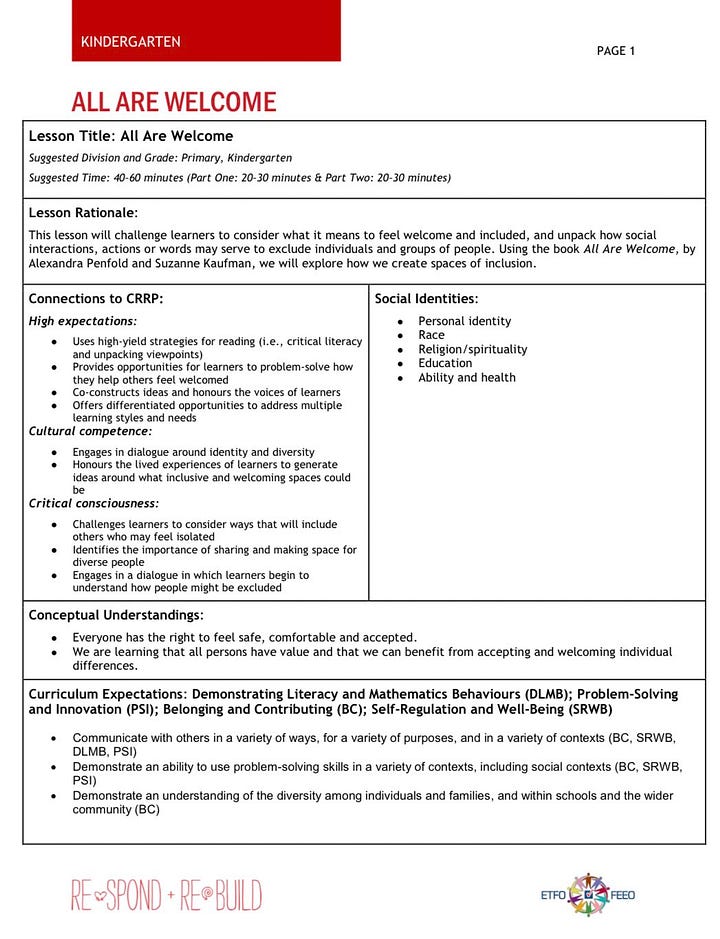

This lesson has students doing a bit of art/collaboration, discussing how that went, then practicing showing emotions by reaction to statements like “you are not invited to play with a group of friends.”
After reading the book “All Are Welcome” (nothing crazy), students share times they didn’t feel welcome, and the teacher informs them that “some places are not always welcoming,” suggesting examples of such scenarios (skin colour, sexual orientation, etc.).
Students are then given a “BLM scenario card” to prompt discussions on “inclusion”.
3. “Her Body Can” teaches about bodies coming in different “sizes, shapes and forms” and has students “interrogate normative images” of bodies observed in media texts.
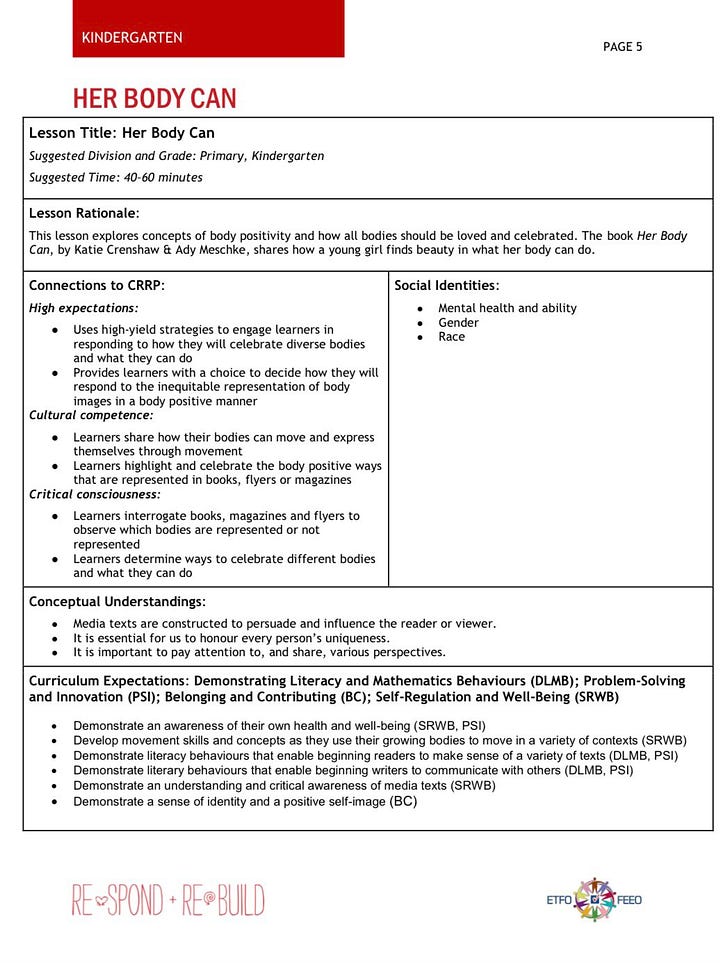
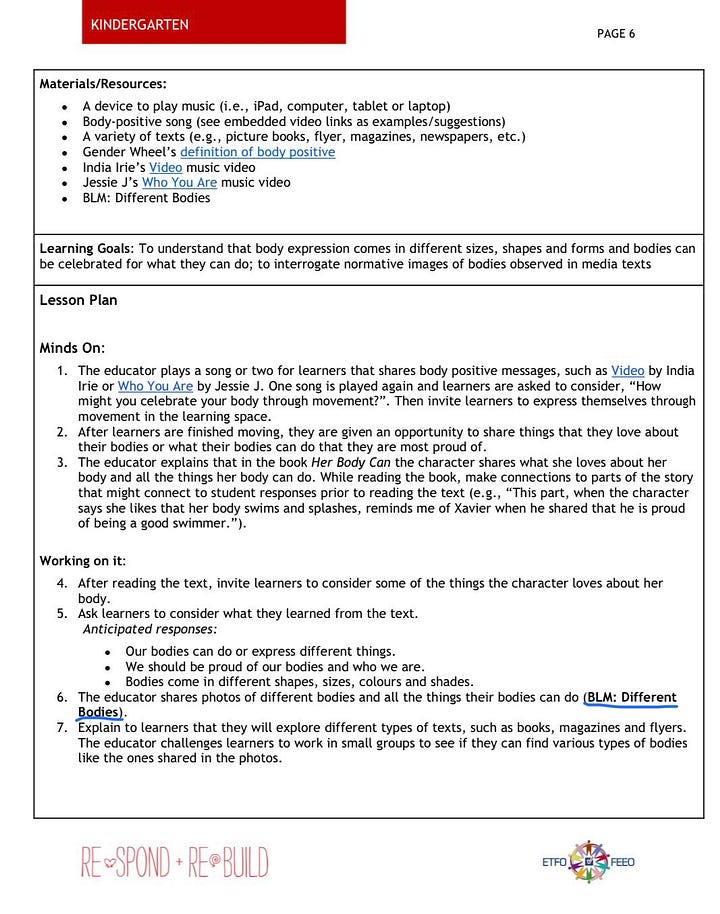
After listening to a song with “body positive messages”, they dance to it, and read a book about a girl describing things her body can do (ex. go swimming, etc.).
Then students look at provided photos of “different bodies” (a woman with a beard, man in high heels, etc.) before sifting through books, flyers and magazines to find similar bodies to those in said photos.


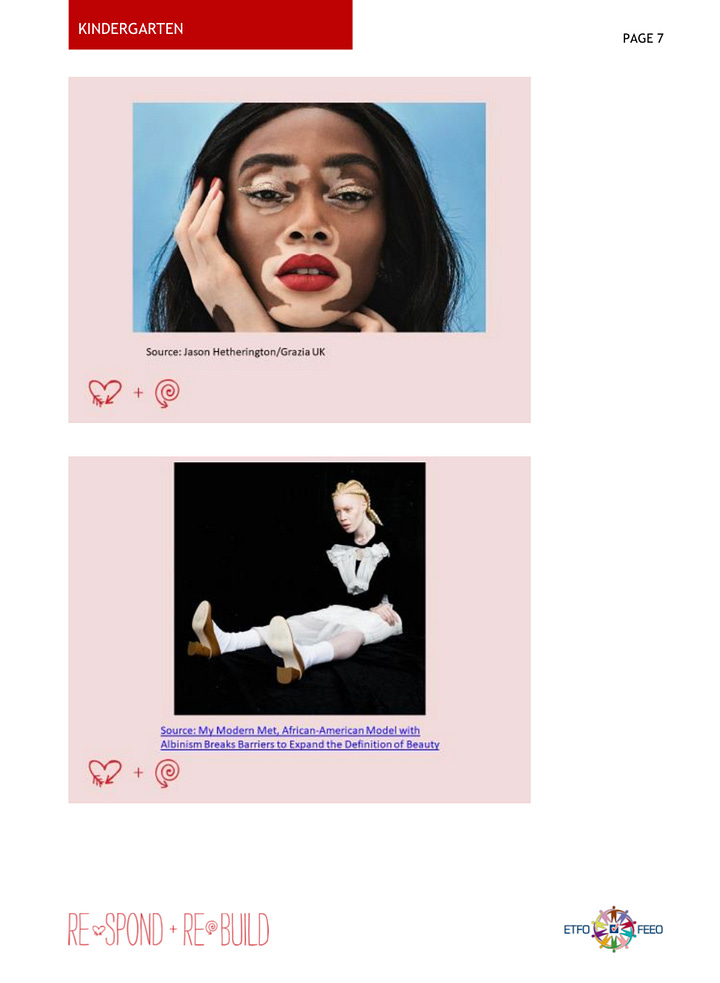

This leads to a discussion on what kind of bodies they saw. Were all types of bodies represented?
As students think about “how they will challenge hidden messages of who is seen and not seen”, the teacher discusses ideas on how to represent a diverse range of body types.
4. “I Am Brown” teaches that “being brown is diverse and reflects different lived experiences”, and “explore[s] concepts of self-identity and skin colour.”
The lesson is in line with “Culturally Responsive and Relevant Pedagogy” (CRRP), which is a conversation for another day…
The teacher displays a variety of items that are all shades of brown, like all of us, students learn. Then they are asked to “make additional comparisons and observations about their skins.” They read a book full of black/brown characters (“I Am Brown”), and then draw/paint themselves.
5. “Love is Love” is a lesson that explores “concepts of exclusion and inclusion based on sexuality.”
Five of the 4/5 year olds are given a sticker with a colour of the rainbow while the other kids form a circle, and are instructed to prevent the “learners with stickers” from joining them.
After feelings about the activity have been discussed, the teacher reads the book “Love is Love”, in which a boy wears a rainbow heart shirt and gets teased. He explains that it is because his dads are gay, and that some people say that being gay is “gross”.
One student is selected to play the role of that boy and walk along a corridor while all the other students try to make them feel “included.”
These are just a few of the lessons available, but that’s enough for one day!




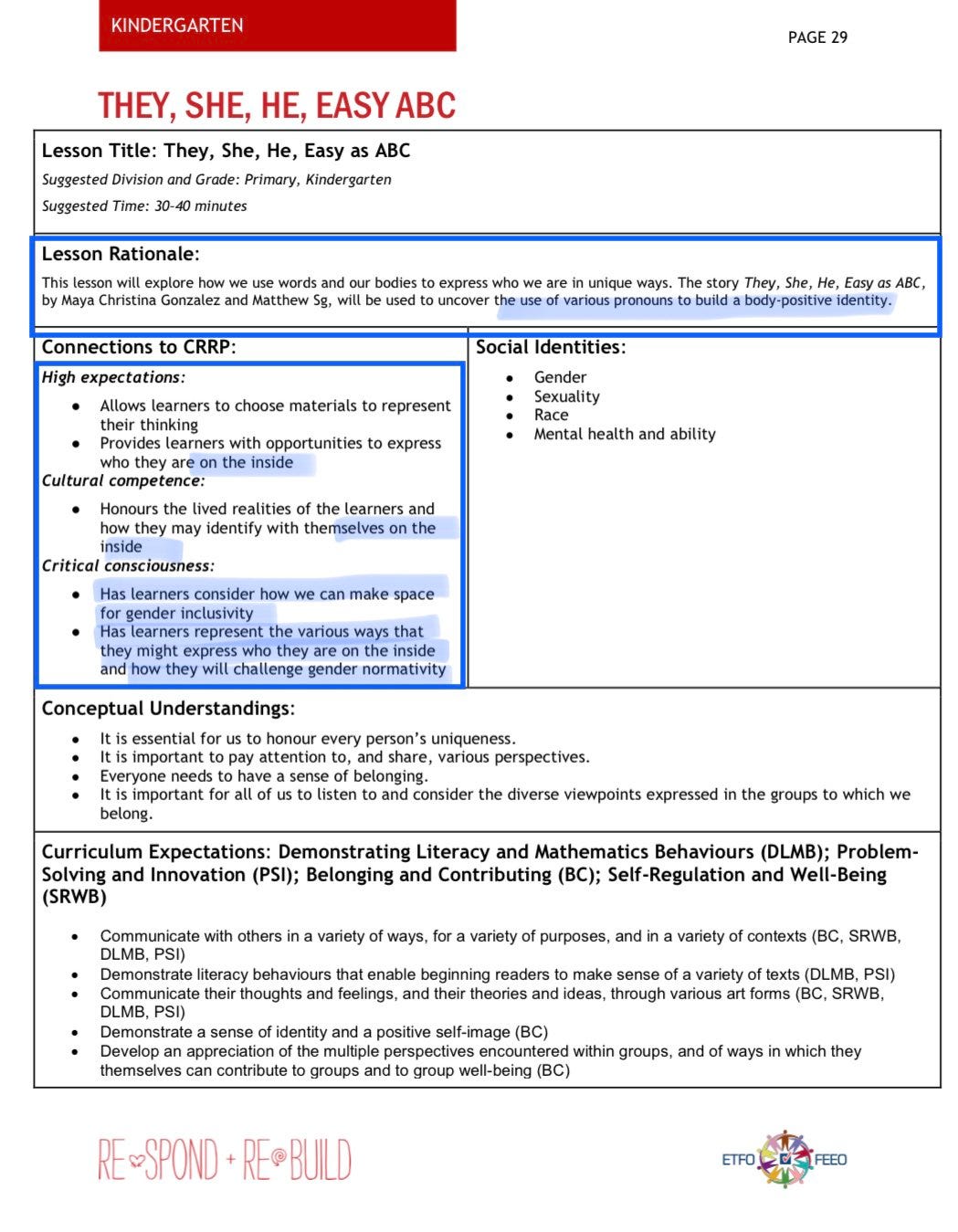
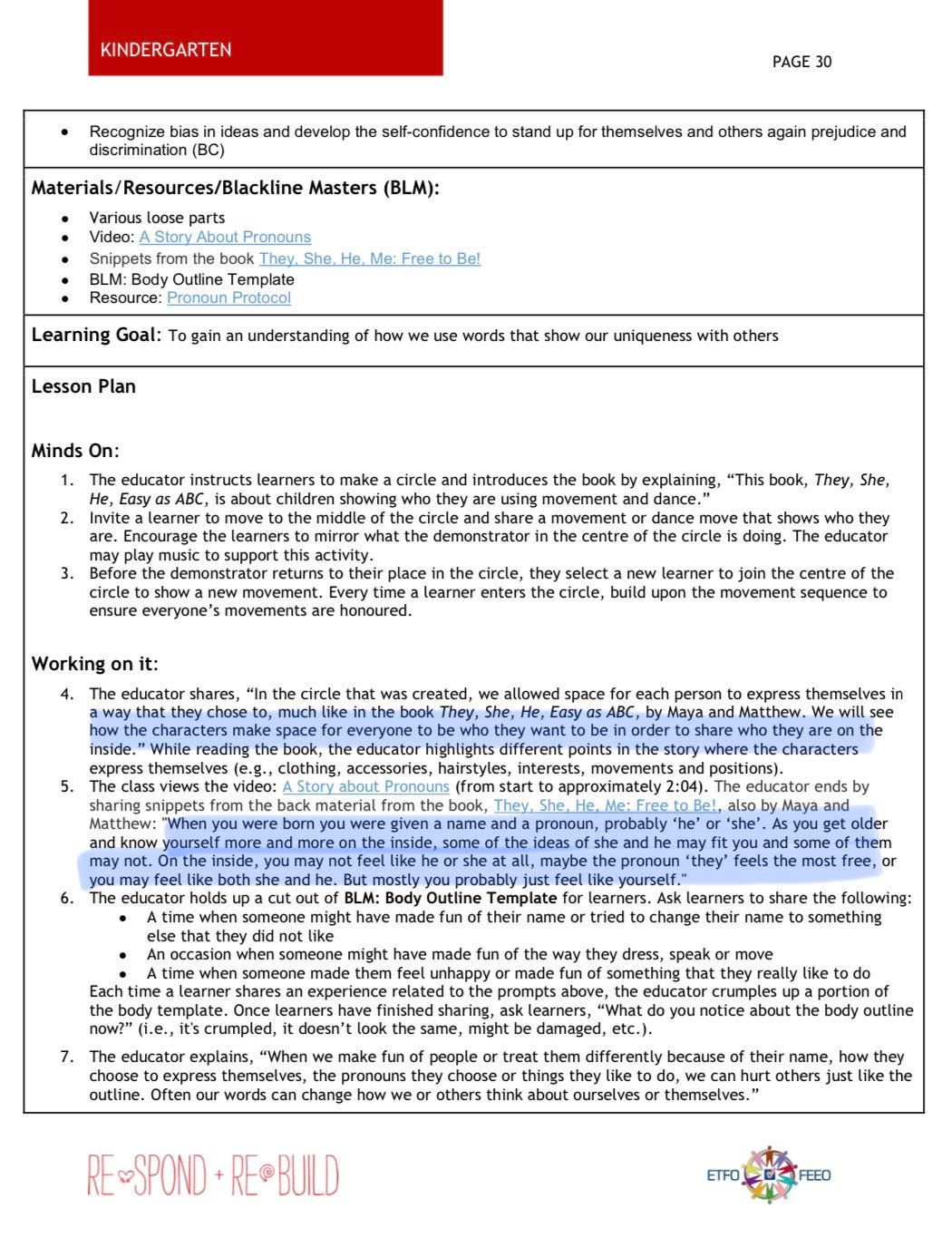

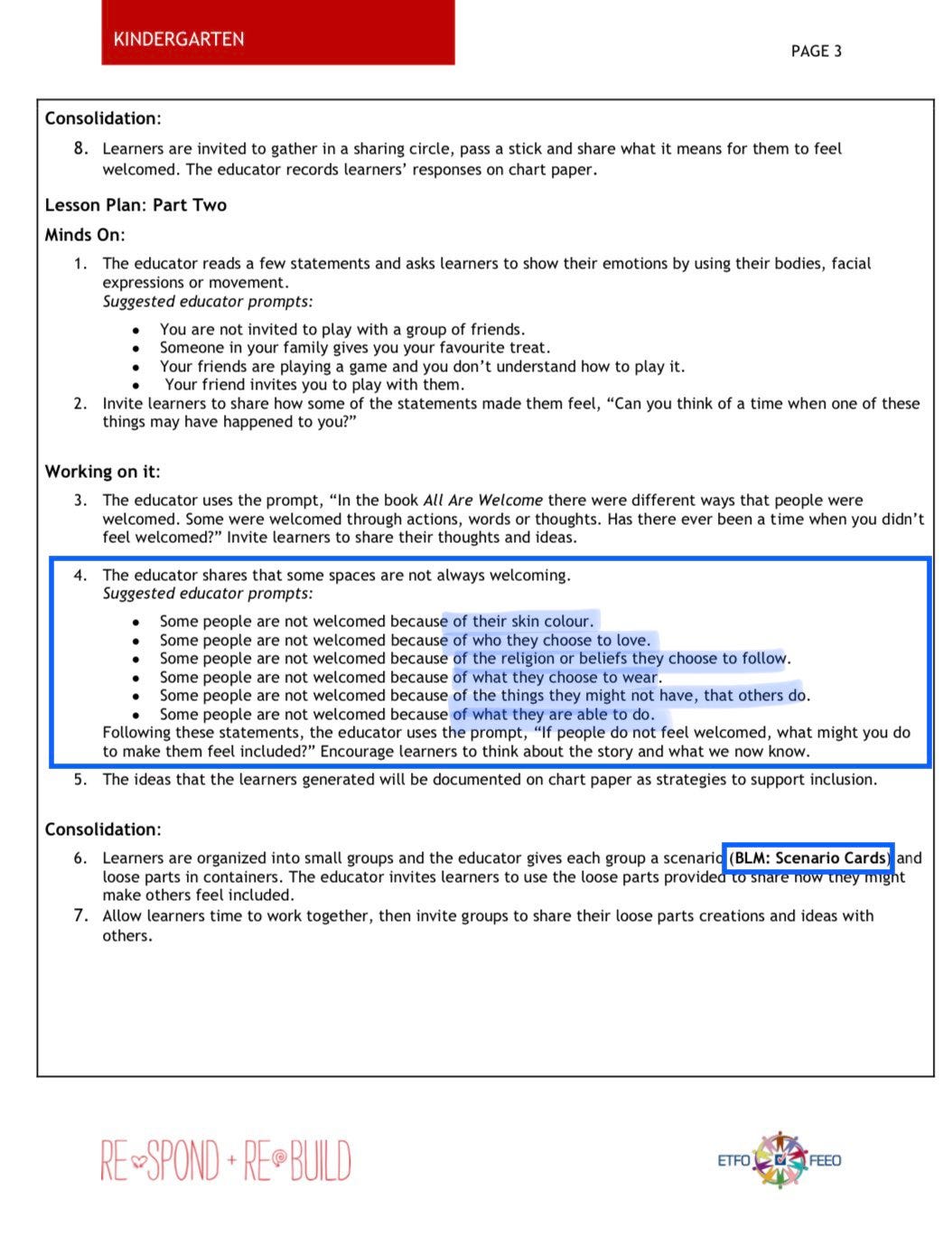

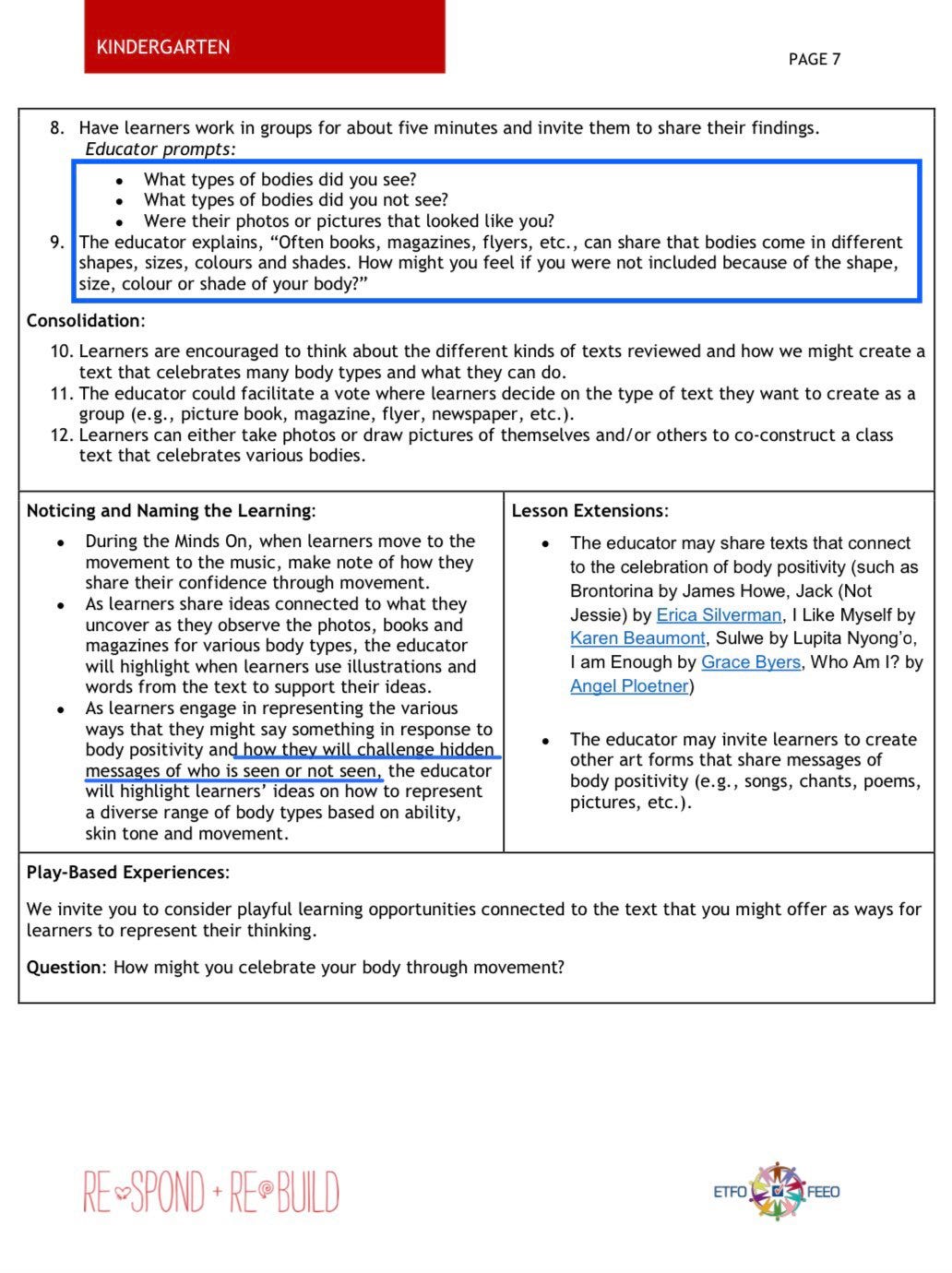




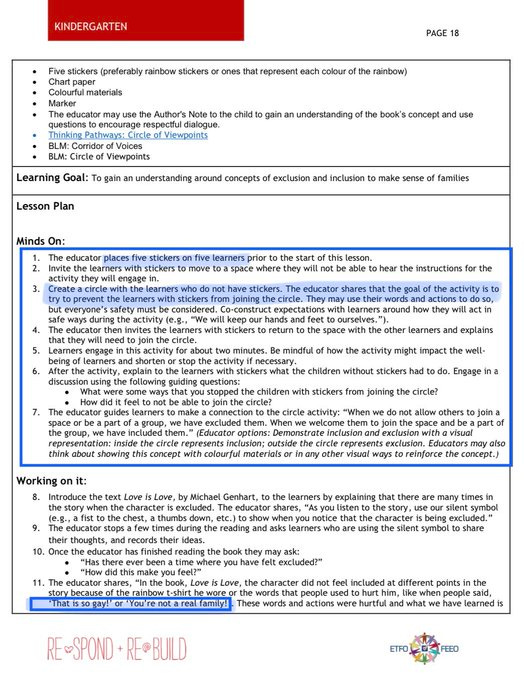
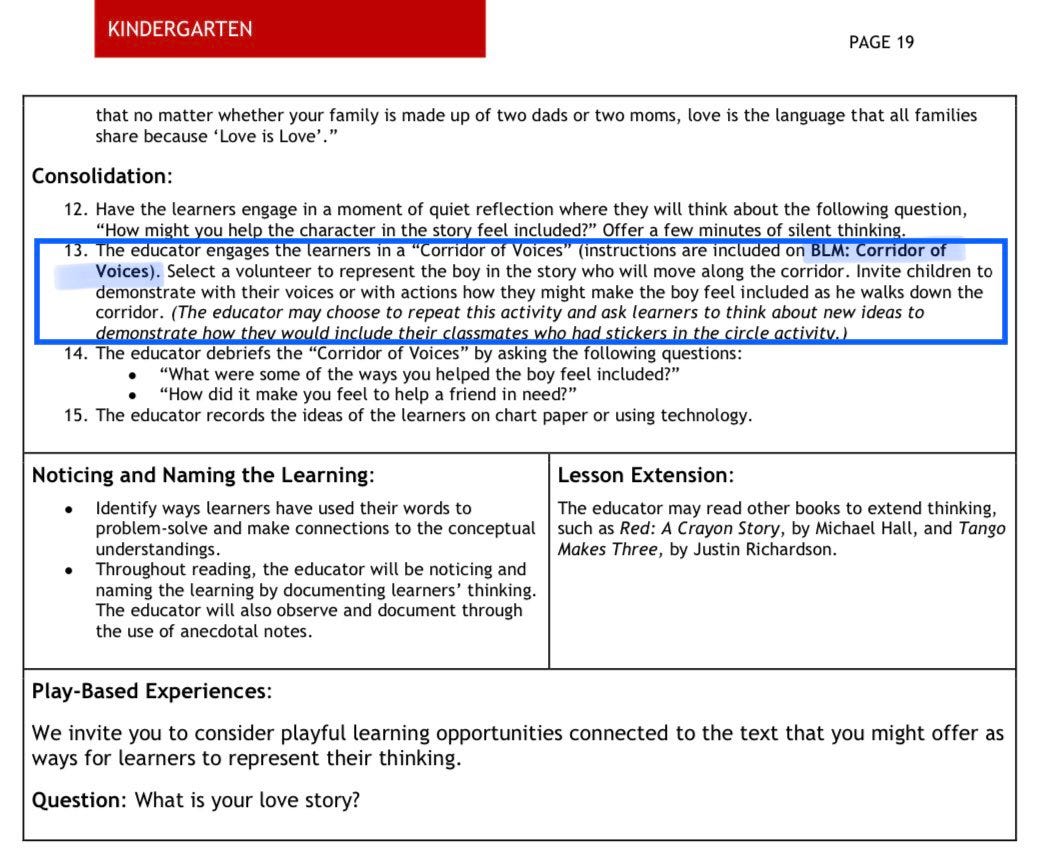
What ever happened to simply learning to read, print/write and learning how to count?
Very disturbing, to say the least. Are parents aware that their children are being exposed to this garbage?